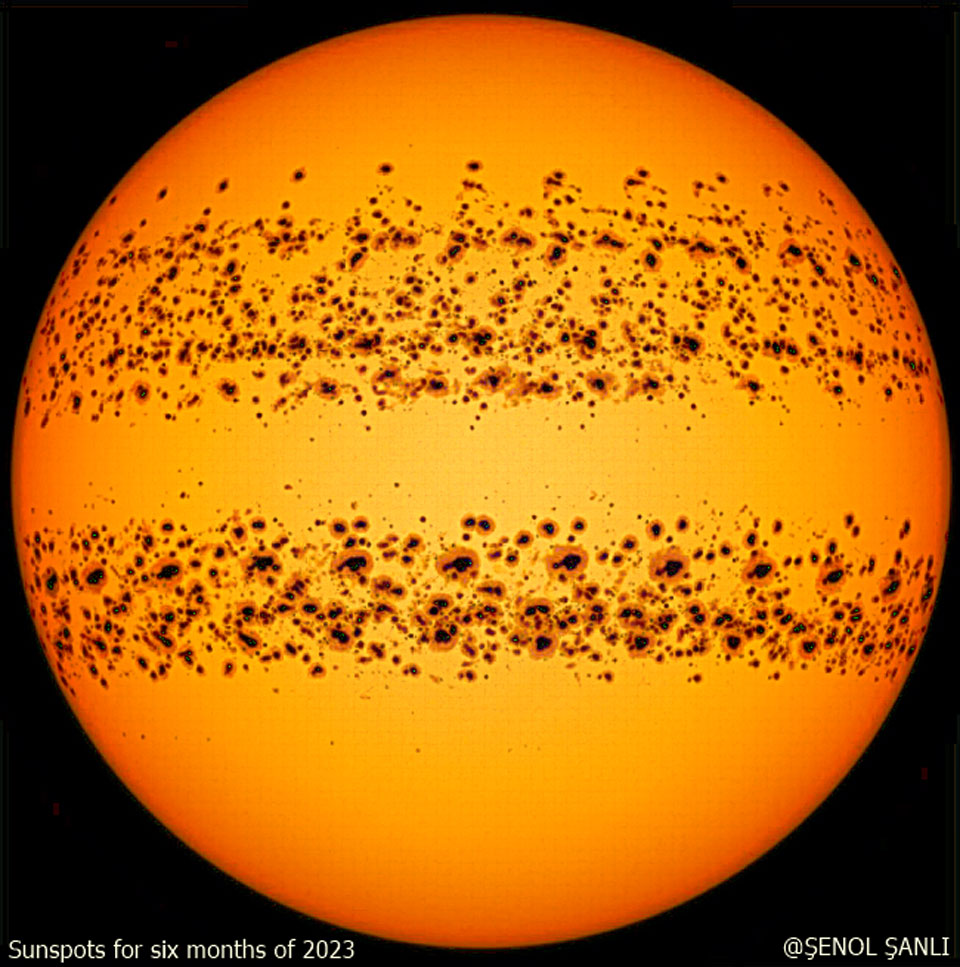2023年7月11日
Sunspots on an Active Sun
Image Credit: NASA, SDO; Processing & Copyright: Şenol Şanlı
Explanation: Why is our Sun so active now? No one is sure. An increase in surface activity was expected because our Sun is approaching solar maximum in 2025. However, last month our Sun sprouted more sunspots than in any month during the entire previous 11-year solar cycle — and even dating back to 2002. The featured picture is a composite of images taken every day from January to June by NASA‘s Solar Dynamic Observatory. Showing a high abundance of sunspots, large individual spots can be tracked across the Sun’s disk, left to right, over about two weeks. As a solar cycle continues, sunspots typically appear closer to the equator. Sunspots are just one way that our Sun displays surface activity — another is flares and coronal mass ejections (CMEs) that expel particles out into the Solar System. Since these particles can affect astronauts and electronics, tracking surface disturbances is of more than aesthetic value. Conversely, solar activity can have very high aesthetic value — in the Earth’s atmosphere when they trigger aurora.
Tomorrow’s picture: star bar with rings
活跃太阳的黑子
影像提供: NASA, SDO; 影像处理与版权: Şenol Şanlı
说明: 为何太阳目前如此活跃?没人能说个准。随着太阳往2025年的活动极大期靠近,它的表面活动本来就预期会增加。不过,太阳在上个月所产生的黑子数量,比过去整个11年太阳周期中的任何一个月都要多,甚至可一路回溯到2002年。这幅主题影像,是由NASA的太阳动态观测卫星(SDO),于今年1月到6月之间每天拍摄的照片组合而成。影像呈现了大量从左到右旋过日盘的太阳黑子,其中的单颗大型黑子之可追踪期间大约为2星期。而随着太阳活动周期持续,黑子出现的位置通常愈来愈靠近赤道。太阳黑子只是太阳展现的表面活动之一,其他的还有闪陷(耀斑)及会把粒子喷入太阳系的日冕物质抛射(CME)。由于这些粒子会对太空人及电子设备造成影响,因此监控太阳的表面扰动,不仅是因为它们的美学价值。话说回来,太阳活动倒是可有很高的美学价值,如果它们触发了地球大气中的极光活动。
明日的图片: star bar with rings







